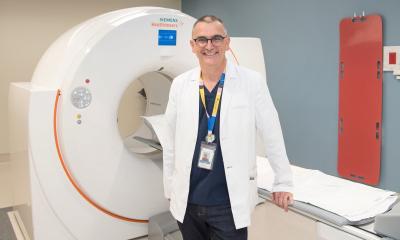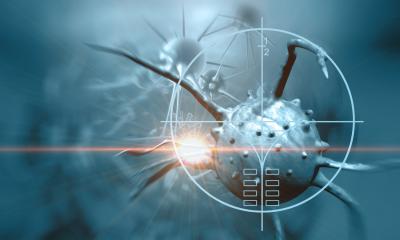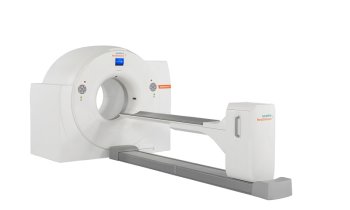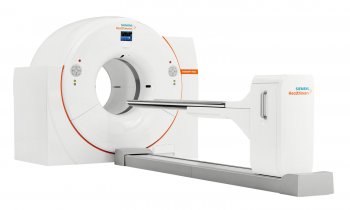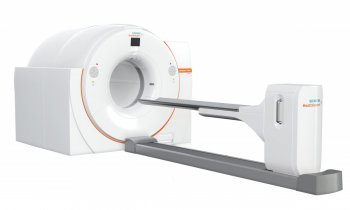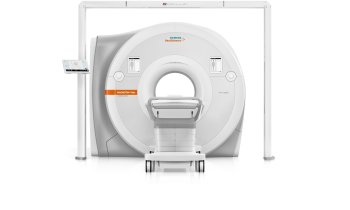Technology, tracers and trends
The last decade saw PET and now PET/CT numbers expand rapidly in Europe. More recently the picture has been less rosy with public and private sectors delaying new projects and pushing back the replacement of equipment.

Europe is still a key region but the growth for new equipment orders is in the emerging markets (Chart 1). This has implications for anyone interested in a new PET/CT. The focus is moving away from research to ‘value’ systems – i.e. systems that match the needs of emerging markets. It’s a trend we have seen in other modalities, such as MR.
Todays ‘vanilla’ PET/CT combines a mid-range 64-slice CT with a PET camera featuring time of flight (TOF) technology. If anything it is over specified, close to 95% of applications are oncology, using the tracer 18FDG and few centres use the CT diagnostically. Time of flight and new detector materials have delivered benefits. Systems are now faster and offer users the choice to use lower activity.
Many centres now use 250MBq rather than 370 MBq of 18FDG. MR, when it first emerged in the early eighties, was slow ~1 patient per hour and observers saw little opportunity for improvement. They were wrong. Higher field strengths, improved coil designs coupled with sequences such as gradient echo and echo planar allowed a fourfold increase in patient throughput.
The picture is similar with PET. From one patient per hour five years ago a few centres are now scheduling as many as three cancer patients per hour depending on the centre’s infrastructure, in particular patient handling and supply of 18FDG. Most users feel 16 patients per day can be achieved on the latest generation of equipment. Not all achieve this.
In many countries centres are building their referral base and, in some, face the challenge of a limited reimbursement schedule. Today an 18FDG PET/CT examination is expensive, typically 1,000 euros, but the cost of carrying out the exam is coming down. Rising patient throughput is the main reason, while the cost of 18FDG has fallen ~ 25% over the last five years.
In Western Europe PET scanners are now found at a density approaching one per half a million population (Chart 2). In 2012 the number of FDG examinations will exceed ~1.0 million across the EU with high investigation rates in France and Italy (40/100,000 population).
There is a finite pool of cancer patients. In countries with high rates of investigation most patients suffering from lung cancer and lymphoma now receive a PET/CT. In these countries the proportion of examinations of breast and gynaecological tumours is rising.
Other compounds are coming to the fore. Choline has been widely used in Germany and, in the last couple of years, across Europe. It is expensive, ~ €1,000, and is used to screen for secondary tumours resulting from underlying prostate cancer. Gallium labelled derivatives of octreotide, a somatostatin analogue, which tags neuroendocrine tumours (NETs) are increasingly used. Again, Germany is at the forefront.
Economics have hampered the use of fluoride. The ‘technetium crisis’ of a couple of years ago stimulated its use but with the return of normal service usage dropped back. Although relatively cheap for a PET agent a PET scan struggles to compete on cost grounds with a traditional scintigraphy study even though the quality of the PET image is superior.
The move by centres to broaden the menu of radiopharmaceuticals is an encouragement to suppliers who hope to introduce new agents over the coming years.
Currently PET is an oncology tool, but for half its life neurological and cardiac applications were the bread and butter. PET is still the gold standard method to measure cardiac perfusion.
Most of the applications in cardiology and neurology involved short-lived isotopes only available from a cyclotron nearby. 18FDG offered few or no advantages over other modalities. This may change with the launch of new tracers.
The first of these are compounds that bind to bamyloid or its precursors and offer the opportunity to identify Alzheimer’s before clinical signs are evident. Other 18F labelled tracers in the pipeline targeting cancer, neurology and cardiology are expected in the next five years. Rubidium, which is widely used in the USA, replacing traditional nuclear cardiology examinations, is yet to be approved in Europe. Expectation is that this will be in 2013. It faces a challenge not only from scintigraphy but also MRI, CTA and ultrasound. It suits high patient numbers and, if US experience is anything to go by, these are the centres expected to show interest.
PET/MR is in its infancy. It is a research tool. How it will be used in routine clinical use and where its advantages lie is still to be determined. This may be in conjunction with tracers other than FDG in areas that leverage the advantage of MRI, such as the brain.
How Europe fares in dealing with its budgetary deficits will influence these new developments. A return to growth presents opportunities; low or no growth and a cost constrained environment will present a challenge.
PROFILE
Dr Anthony Stevens, a biochemist by training has spent the last 25 years involved with imaging. In 1984 he joined GE Medical Systems at their launch of MRI leaving six years later to found the consultancy Medical Options. In the past twenty years he has worked for many of the key companies involved in medical devices. In the right place but not the right environment to follow the role out of MR PET offered him a second chance to see how a technology is adopted.
05.03.2013



